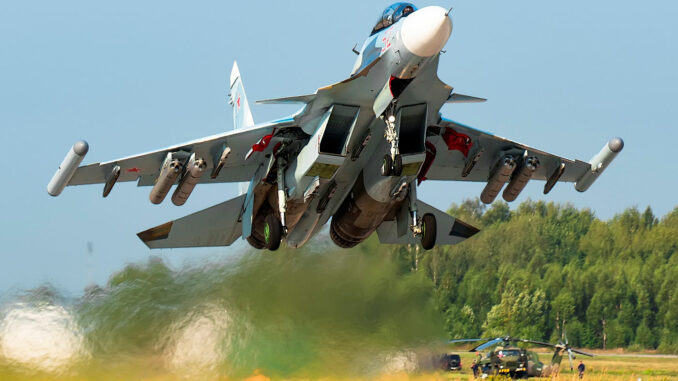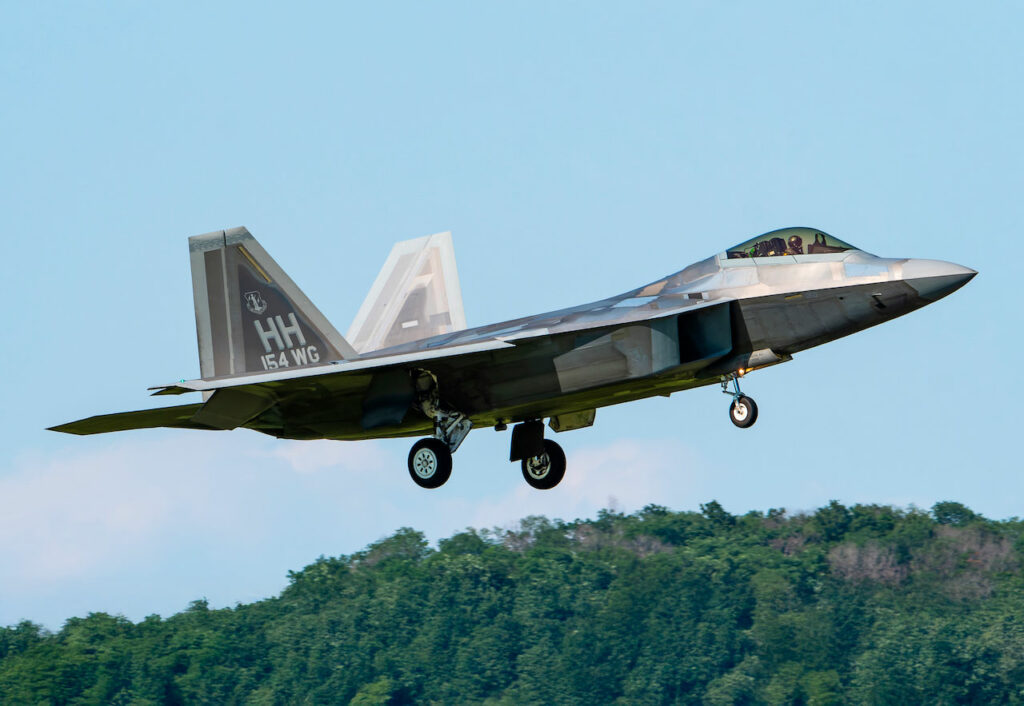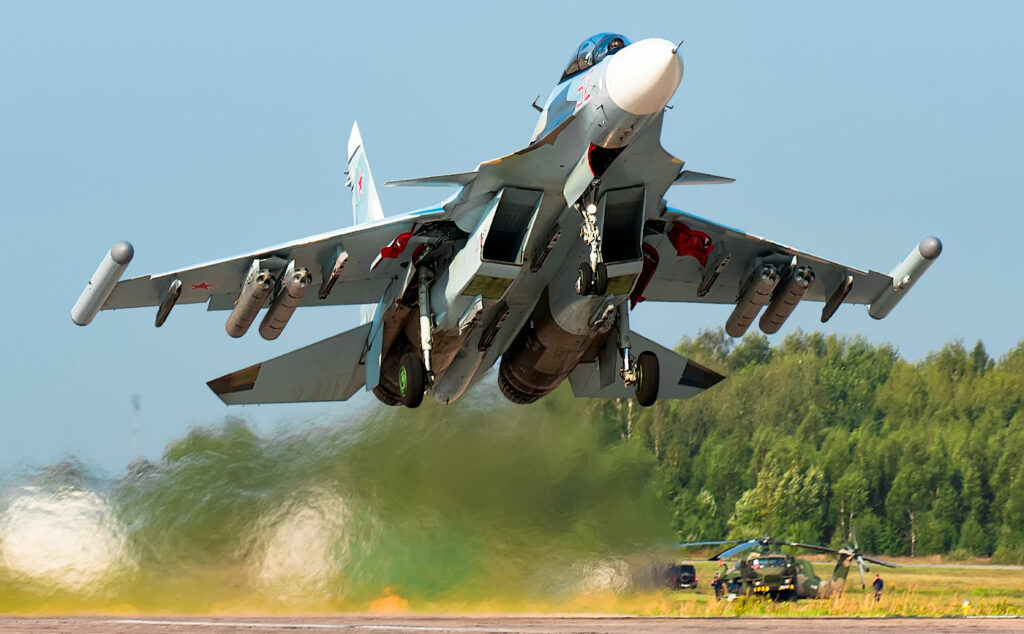
Detailed analysis of air interception procedures in the United States, France, and Russia, illustrated with concrete examples and precise data.
The interception of an unidentified aircraft is a critical operation for national security. It involves strict and coordinated procedures between the air force and control authorities. This article examines in detail the protocols followed by pilots during such interceptions in the United States, France, and Russia. We will analyze the key steps, the resources deployed, and the specific characteristics of each country.
Interception procedures in the United States
Identification and detection
The United States has several ADIZ (Air Defense Identification Zones) around its continental territory, Alaska, Hawaii, and island territories. Any entry into these zones requires prior identification, including a filed flight plan, active radio contact, and a transponder turned on with a valid mode 3/A code. In the event of non-compliance, surveillance centers, which combine civilian radars from the Federal Aviation Administration (FAA) and military detection systems from NORAD (North American Aerospace Defense Command), trigger a heightened identification procedure.
NORAD, based at Peterson Space Force Base, Colorado, coordinates this response with its ground and air units. Each ADIZ sector has 24-hour rapid response units called Quick Reaction Alert (QRA). These units can detect and track unidentified aircraft from as low as 300 meters and up to 30,000 meters, depending on radar configurations.
Deployment of fighter jets
As soon as NORAD confirms a threat or anomaly, it activates an interception mission. This triggers the immediate takeoff (scramble) of fighter jets on alert, often F-15C Eagles, F-16 Fighting Falcons, or F-22 Raptors, from pre-positioned bases (e.g., Joint Base Elmendorf-Richardson in Alaska or Tyndall Air Force Base in Florida).
These aircraft reach the suspect aircraft within minutes at speeds exceeding Mach 1, or more than 1,200 km/h. Once in visual contact, the pilots apply the “Visual Intercept Protocol,” which includes observing markings, aircraft type, flight direction, altitude, and behavior.
The interceptor pilot establishes radio contact on 121.5 MHz, the universal emergency frequency. He announces his call sign and gives clear instructions, such as “you are being intercepted, follow me.” If the aircraft does not respond, the pilot uses standard visual signals, such as wing wags or flares, to indicate a command to change course.
Procedures in case of non-compliance
If the aircraft does not respond, several levels of intimidation may be implemented. These include close-range maneuvers, flying in close formation, or repeated orders at reduced distance. Pilots document everything using onboard cameras. If radio contact is reestablished, the aircraft is escorted to a designated airfield or forced to leave US airspace.
If the suspicious behavior persists, the interception can be escalated to a higher level: application of the Rules of Engagement (ROE), decided by the President of the United States or a delegated command. This may include the destruction of the aircraft.
On February 4, 2023, a Chinese-made balloon detected over Montana crossed several states before being shot down by an F-22 firing an AIM-9X at an altitude of 18,000 meters off the coast of Myrtle Beach. This engagement required coordination between the FAA, NORAD, the Department of Defense, and the White House. The estimated cost of the interception, including flight hours, the missile, and logistics, exceeds €400,000, or approximately $430,000.

Interception procedures in France
Airspace surveillance
France provides permanent surveillance of its airspace through the Permanent Air Safety Posture (PPSA), coordinated by the National Air Operations Center (CNOA), based in Lyon-Mont Verdun. This center, the armed wing of the Air Defense and Air Operations Command (CDAOA), is responsible for initiating interception measures at any time, 24 hours a day.
French airspace is monitored by a network of military radars at Air Base 943 (Mont Verdun) as well as by civilian stations. Every day, around 3,000 aircraft movements are monitored, of which 15 to 30 are subject to further identification. These checks mainly concern civil aircraft with a faulty transponder, a flight plan defect or a loss of radio contact with control centers.
In the event of an anomaly, the CNOA can order an immediate interception, alerting fighter jets stationed in Nancy, Saint-Dizier, Orange, or Mont-de-Marsan, which are capable of responding within 10 minutes within a radius of 400 to 600 kilometers.
Interception and identification
Once the order is given, Rafale or Mirage 2000-5 aircraft take off with the mission of intercepting the suspect aircraft. Their supersonic cruising speed allows them to quickly catch up, at speeds of around 1,500 km/h. The pilots receive position data from CNOA radars, and their mission follows a standardised procedure.
The primary objective is visual identification: the pilots position themselves at a safe distance to observe the markings and type of aircraft and assess its trajectory and flight intentions. They then establish radio contact on 121.5 MHz, identify their mission, and give simple, coded commands: “you are being intercepted, follow me.” If there is no response, they can use light signals, wing tilts or, if necessary, drop flares to signal danger or an imperative order.
If the aircraft concerned is a civilian aircraft, the objective is to restore communication with civilian controllers and direct it to a designated airport for verification. If the aircraft behaves in a threatening or deliberately uncooperative manner, it may be escorted to the border. Lethal force may only be used after a decision by the President of the Republic or, in cases of absolute emergency, by delegation from the Chief of the Armed Forces Staff (CEMA).
International cooperation
France is involved in the NATO Air Policing mission. It regularly deploys fighter jets to Estonia, Lithuania, and Romania. These missions are directed by the NATO Combined Air Operations Center (CAOC) in Uedem, Germany.
In February 2025, two Rafale B aircraft from the French detachment in Lithuania were deployed to intercept a Russian Il-20M Coot-A aircraft flying without a transponder over the Baltic Sea. The interception took place in the immediate vicinity of NATO airspace, at an estimated altitude of 8,000 meters, with formal identification by visual contact. This type of mission takes place regularly: more than 300 interceptions of Russian aircraft were carried out by NATO forces in 2024, including a dozen involving French aircraft.
At the same time, France participates in the European Air Surveillance Coordination Cell, as part of the Sky Shield program, which pools the radar capabilities and rapid response resources of several European countries.
These missions demonstrate the ability of French forces to operate within a multinational chain of command, with strict rules of engagement, modern resources, and a rigorous doctrine of use focused on responsiveness, proportionality, and constant control of the decision-making chain.

Interception procedures in Russia
Surveillance and detection
The Russian Federation has one of the most extensive air surveillance systems in the world. This network, operated by the Russian Aerospace Forces (VKS), relies on a combination of ground-based radars, airborne sensors, reconnaissance satellites, and a dense network of fixed and mobile radar stations. The central command structure is provided by the National Defense Control Center in Moscow, supported by four military districts.
Russian territory is surrounded by extensive interception zones, particularly in the Arctic, the Pacific region, the Far East, and the western borders near NATO. Any violation of airspace, or even a suspicious approach, triggers an automated response from the integrated air defense system.
Russian long-range radars, such as the Nebo-M and Voronezh-DM, are capable of detecting targets at distances of over 600 km, including at high altitudes. The data is processed in real time by regional command centers, which can authorize an interception in less than 3 minutes.
Interception and identification
When an unknown aircraft is detected, air superiority fighters are dispatched to intercept it. Depending on the area and type of threat, these may be Su-27, Su-35S, MiG-31BM, or more recently, the Su-57 in test configuration. These aircraft are based on air platforms on permanent alert, notably in Khotilovo, Anadyr, Engels, and Kaliningrad.
The pilots receive encrypted instructions from command centers and quickly reach the suspected target, sometimes at speeds exceeding Mach 2, or 2,450 km/h. Once in visual contact, they must identify the type, registration (if visible), flight configuration, and direction. Like other air forces, they use the 121.5 MHz frequency to contact the aircraft, although exchanges are often limited or non-existent, particularly in the case of foreign reconnaissance aircraft.
The visual signals used by Russian pilots are similar to those used by NATO: wing wags, positioning in front of the target aircraft, or even the use of flares to give a clear warning. If the aircraft does not respond or change course, it may be escorted out of the area or forced to land. Fire orders, meanwhile, can only be given by the Ministry of Defense or the supreme command.
Notable incidents
Since the early 2020s, air tensions have escalated between Russia and NATO countries. In November 2024, a French Dassault Falcon 2000 used for electronic surveillance (CUGE program) was intercepted over the Black Sea by two Su-30SMs. While flying in international airspace, the Russian pilots performed aggressive maneuvers less than 30 meters from the French aircraft.
Recordings of the incident confirmed that Russian controllers threatened to open fire if the aircraft did not leave the area immediately, even though it was outside Russian sovereign airspace. This behavior is recurrent. In 2023, more than 370 interceptions of NATO aircraft were recorded by the VKS, including around 100 in the Baltic Sea and the Barents Sea.
The Russian interception doctrine is highly politicized: it considers certain disputed areas to be part of its strategic space, regardless of international law. Russian fighter jets often operate without transponders and may ignore civil aviation safety standards. This regularly triggers alerts from the International Civil Aviation Organization (ICAO) and diplomatic protests.
These engagements illustrate an aggressive defensive posture focused on deterrence through proximity and speed of action. They involve close coordination between the air force, regional commands, and the political apparatus, with the ability to rapidly deploy heavy assets, including near sensitive lines such as the Baltic borders, Ukraine, or the Arctic.
Air interception procedures are essential for national security. Although protocols vary slightly between the United States, France, and Russia, the key steps remain similar: detection, identification, communication, and, if necessary, neutralization. International cooperation and transparency are crucial to avoiding incidents and maintaining stability in global airspace.